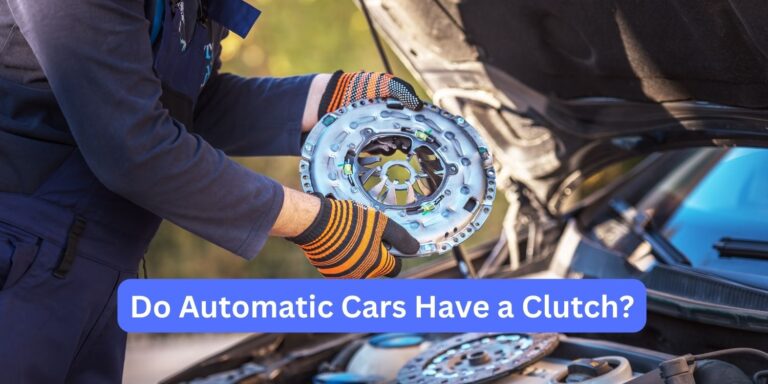When you think of driving, particularly with automatic cars, the first question that might pop into your mind is, “Do automatic cars have a clutch?” It’s a question that stirs curiosity and, let’s be honest, a bit of confusion too. After all, automatic transmissions have transformed the driving experience, making it smoother and more intuitive for countless individuals around the globe. However, diving deeper into the mechanics of these vehicles reveals a fascinating landscape that not only answers this potential challenge but also piques further inquiry into how these systems truly work.
To start with, let’s clarify the fundamental distinction between the two primary types of car transmissions: manual and automatic. In a traditional manual transmission, the driver wields direct control over the shifting process using a gear stick and a pedal dedicated to the clutch. This third pedal—often the bane of novice drivers—plays a crucial role in engaging and disengaging the engine from the wheels. For many, the skill of smoothly operating the clutch can feel like an art form, one that requires practice and finesse.
This brings us to the meat of the matter: the automatic transmission. The charming simplicity it offers is one of the reasons many people prefer it. But does it, in fact, possess a clutch? The answer is intricate. Automatic vehicles do not have a conventional clutch pedal; however, this doesn’t mean that the clutch component itself is entirely absent. Instead, automatic transmissions utilize a different mechanism to achieve a seamless driving experience without requiring the driver’s direct input.
Automatic transmissions incorporate a device called a torque converter. This brilliant invention functions as the link between the engine and the transmission. Think of it as a sophisticated fluid coupling that allows the engine to spin independently of the transmission, thus enabling the car to come to a stop without stalling. The torque converter not only facilitates smooth acceleration but also tempers the need for a traditional clutch pedal. So, while you won’t find a clutch pedal in an automatic vehicle, the essence of the clutch’s role remains intact through this innovative technology.
But let’s dig a little deeper. For those who are intricately curious about automotive mechanics, it is worth discussing the different types of automatic transmissions that have emerged over the years. The typical automatic transmission operates through a network of hydraulic systems that shift gears according to the vehicle’s speed and engine load. However, more modern options, such as Continuously Variable Transmissions (CVTs) and Dual-Clutch Transmissions (DCTs), have introduced their own unique flairs to this dialogue.
CVTs offer an extraordinary level of efficiency by providing a seamless transition between gear ratios. Unlike traditional transmissions where you feel distinct shifts, a CVT allows the engine to operate at its optimal power range without the interruptions of fixed gear steps. This performance is achieved through belts and pulleys rather than traditional gears, eliminating the familiar clutch component entirely.
DCTs, on the other hand, have garnered attention for their ability to deliver faster gear shifts. Comprising two clutches (hence the name), one clutch controls the odd gears while the other manages the even gears. This dual-clutch setup facilitates pre-selection of gears, enabling instantaneous shifting with minimal interruption in power delivery. It’s akin to a ballet performance—graceful, elegant, and a testament to engineering prowess.
Even with this complexity, one might still ponder whether the absence of a traditional clutch pedal detracts from the driving experience. For many, the thrill of mastering a manual transmission is replaced by the ease and convenience of an automatic. Yet, those who cherish the act of shifting gears often yearn for that tactile connection to the vehicle. Fortunately, various automatic models today come equipped with paddle shifters or manual modes, providing a sense of control without relinquishing the benefits of automation. Drivers can still feel connected to the driving experience while enjoying the perks that modern technology brings.
So, what about performance? Many purists assert that nothing surpasses the exhilaration of controlling a manual gearbox. There is an undeniable joy in feeling the engine respond to your commands and mastering the art of timing the clutch. However, modern automatics have improved dramatically, offering competitive performance that can outshine their manual counterparts in certain scenarios. The precision of shifts and the consistency of power delivery means that accelerations can be impressively quick and efficient.
In conclusion, while automatic cars do not feature a traditional clutch pedal, they embody a plethora of innovations that fulfill the clutch’s essential function through alternative mechanisms. Whether through torque converters, CVTs, or dual-clutch systems, automatic transmissions have been designed to enhance driving comfort and efficiency. The era of automatic driving allows the driver to immerse in the experience without the nuanced demands of a manual transmission, thus opening the door to an expansive audience eager to embrace the joys of the open road. And perhaps the most significant takeaway is this: whether manual or automatic, what truly matters is the exhilaration of driving.
